Healthy And Delicious! 5 Reasons To Choose The Japanese Breakfast

Japanese breakfast consists of rice, soup, delicious side dishes, and pickles. The flavors and colors usually reflect the seasons, making it an overall exciting cultural experience. If you can choose the type of breakfast, do give the washoku breakfast a try.
Japanese Breakfast - A Meal to Enjoy with All Five Senses
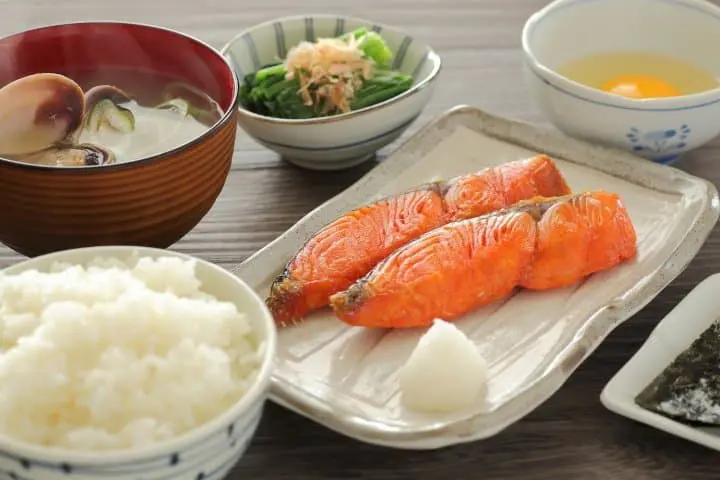
Photo by Pixta
One of the joys of traveling is tasting local cuisineーflavors and textures that are different from what we eat in our home countries. Japanese cuisine is something you shouldn't miss out on. Washoku (traditional Japanese cuisine) has been registered by UNESCO as an intangible cultural heritage in 2013, and for good reasons. The way that ingredients are selected, prepared, and combined has been passed down for generations and it reflects the worldview of the locals.
If your accommodation in Japan includes breakfast, you have the chance to enjoy a Japanese menu in the morning. Just in case you're still not sure whether to try the washoku breakfast or to go for your regular bread and butter or cereal with yogurt, let us help you decide.
5 Reasons to Choose the Japanese Breakfast
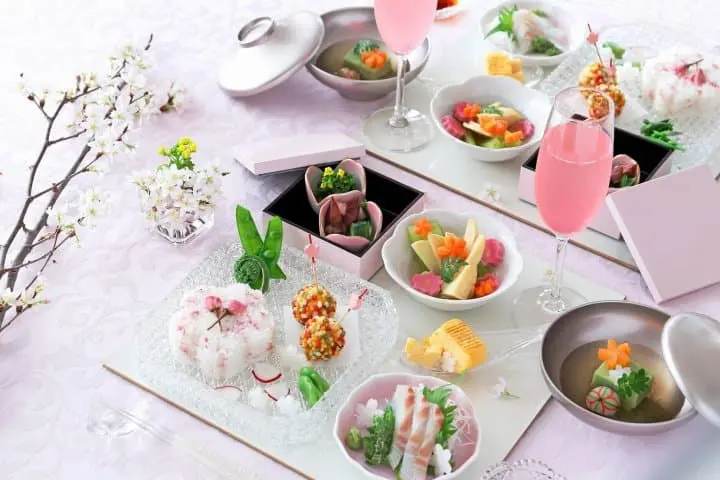
A type of seasonal Japanese breakfast offered at a ryokan or luxury hotel. Photo by Pixta
At hotels in Japan, you can usually choose between Western-style and Japanese-style breakfast. At business hotels, breakfast is usually served buffet-style and it includes both types of cuisine. This means you can pick up anything that appeals to you. No one says you can't have some yogurt with cereal after eating rice with omelet and miso soup.
On the other hand, if you stay at a ryokan (traditional Japanese accommodation), breakfast will be Japanese-style. Lucky you, because it will be both gorgeous and delicious!
If you have to choose, we recommend choosing the Japanese-style breakfast for the following reasons.
1. It's Satisfying, Well-Balanced, and Healthy

Photo by Pixta
A Japanese breakfast consists of rice, miso soup, side dishes, and pickles. The dish combination is made based on the ichiju sansai principle, which means having a bowl of soup and three side dishes with the rice during one meal. The side dishes usually include fish or meat, an egg dish, and a vegetable dish, though they can be customized to one's preferences.
The Japanese breakfast is considered healthy because it consists of a well-balanced variety of dishes, resulting in the intake of all the nutritional elements necessary for the human body to function normally. It has carbohydrates, proteins, minerals, vitamins, and fiber. A balanced combination of these elements should give one the right amount of energy to be active until late noon.
2. A Chance to Taste Japanese Staple Dishes
The traditional breakfast menu includes some of the essential dishes in Japanese cuisine.
Rice
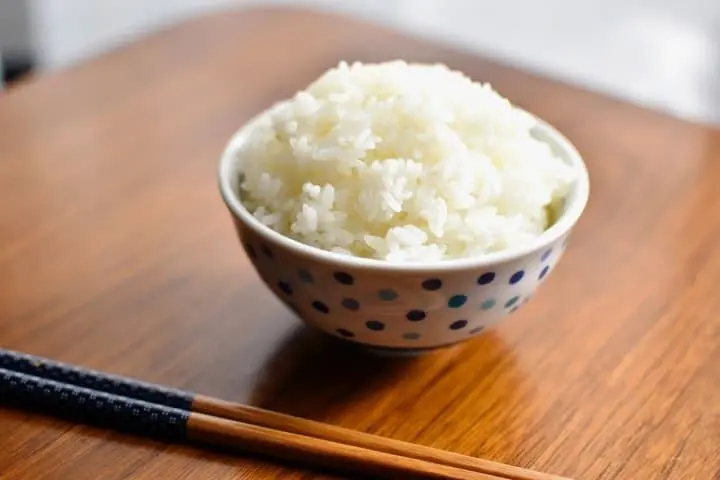
Chewy steamed Japanese rice is something that any visitor to this country should try. Many visitors from abroad are surprised at how different is Japanese rice from the one used in their countries. The texture and flavor are determined by the local cultivation methods.
Brown rice (genmai) and grain rice (gokokumai) are flavorful varieties of rice that are increasingly popular in recent years.
Miso soup
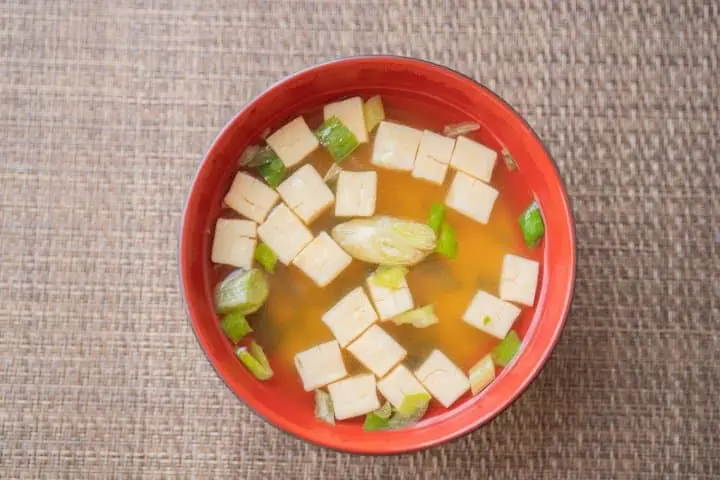
Miso soup is made with miso paste obtained from fermented soy beans. The broth is usually made by simmering kombu kelp and tuna flakes. The flavoring ingredients can be changed every day for variation: tofu, fried tofu, seaweed, cabbage, green onions, shellfish, etc.
A meal is considered incomplete without miso soup. That is why it is usually included in any set meal served at restaurants.
Read also
Fish
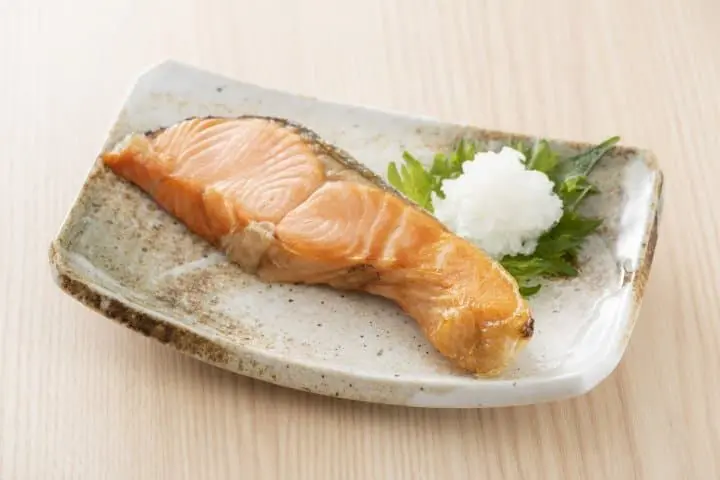
Photo by Pixta
Since Japan is surrounded by seas and the ocean, seafood is part of the daily menu of the locals. There is a wide variety of seafood cooking methods that ensures a incredible diversity of flavors.
Fried salmon, which is tasty, light, full of nutrition, and visually appealing, is a popular choice for breakfast.
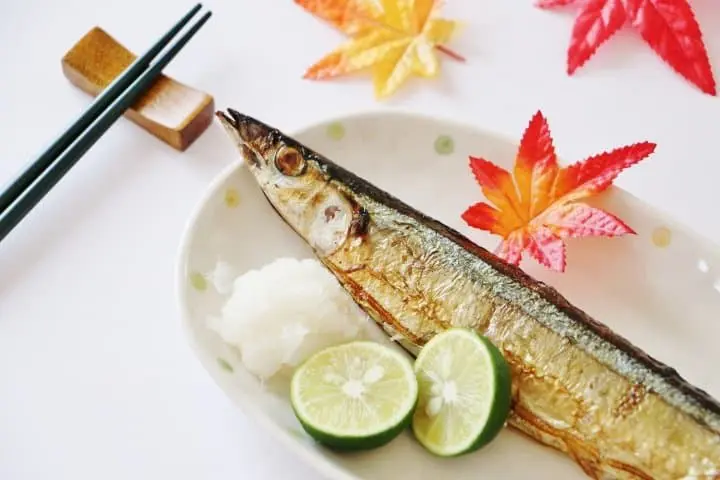
Horse mackerel, mackerel or saury are other fish varieties often included in a traditional breakfast menu.
Japanese Pickles
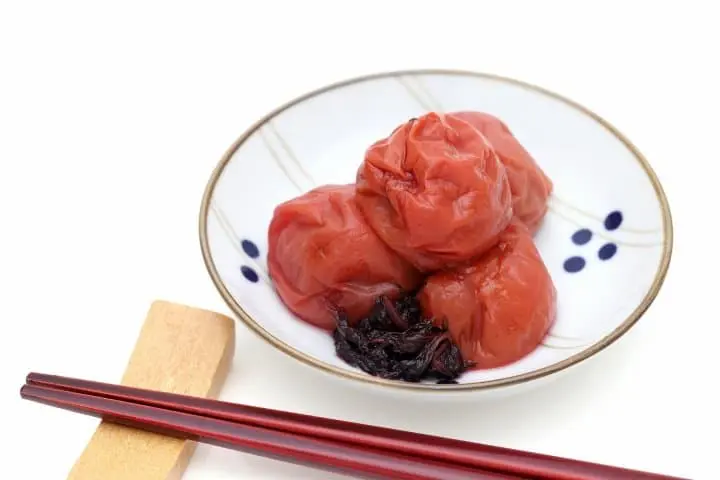
Pickles, widely loved for their refreshing taste, are likely to appear in any Japanese menu. Some of the traditional methods of making pickles involve using salt and vinegar, sake lees or brine and fermented brine.
Pickled plums (umeboshi) often accompany the breakfast meal. Their flavor varies by type and pickling methods, but they tend to be very aromatic and sour, a taste that literally has the power to awaken you in the morning.
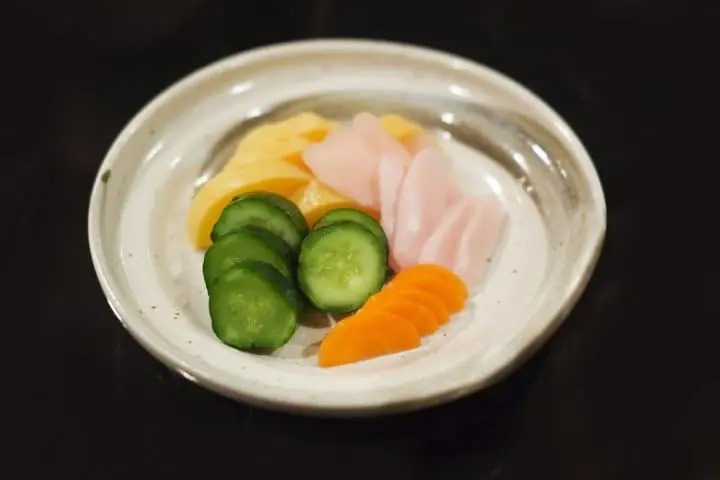
Other popular Japanese pickles are cucumbers, daikon radish, carrots, ginger, and takuan (yellow pickled radish). Even if they usually come in small quantities, pickles are arranged in a way that is visually appealing.
Popular Side Dishes
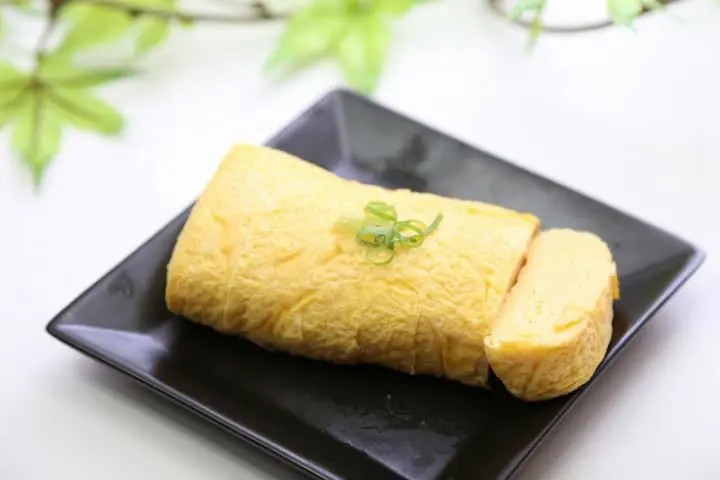
While fish is the main side dish, a breakfast meal feels incomplete without at least one more side dish and some salad or cooked vegetables.
Omelet is a popular breakfast side dish, loved for both its taste and bright color.
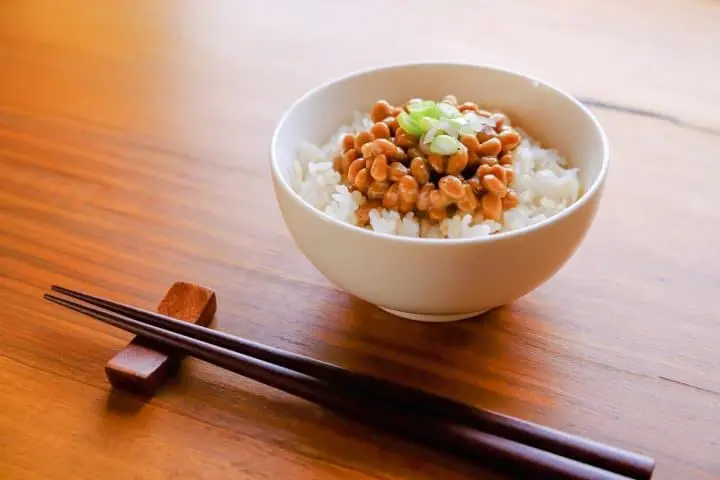
Natto (fermented beans), rich in fibers and nutrition, is another popular breakfast dish. While it may not look very appealing at first sight, it tastes surprisingly good when mixed with some mustard, soy sauce, and green onions and served over rice. The secret to enjoying it is mixing it really well to cut through its stickiness.
3. Japanese Breakfast Looks Amazing!
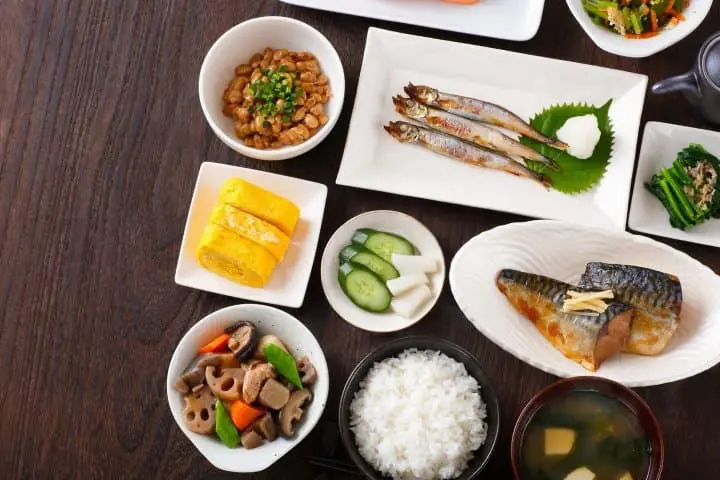
Photo by Pixta
One of the essential features of Japanese cuisine, in general, is that the food doesn't only have to taste good but it also looks very good. Each dish is arranged on a separate plate in a way that highlights its shape, color, and texture. Usually, the color of the vessel contrasts vividly with the color of the food.
An unspoken rule when preparing breakfast at home is to have all the basic colors: white, green, yellow, red, in order for the meal to look appetizing. If you visit a Japanese home, you might witness the cook of the house adding some pickled carrots next to the fried mackerel side dish, just to have some "red" in the menu.
4. It's Easier to Make than You'd Think!

Photo by Pixta
When you think of rice, soup, and three side dishes, you might imagine it takes at least one hour to make such a breakfast menu.
Actually, it can be made in about 15 minutes! Use a rice cooker to cook the rice from the evening before. It will keep it warm until morning when you just scoop some steaming rice into a bowl and serve it.
Miso soup is very easy to cook if you have some pre-made dashi broth stored in the fridge. Just heat the broth, add in the miso paste and the flavoring ingredients, and let it simmer. It should be ready in about 5 minutes.
Salmon is usually sold sliced and salted at any supermarket in Japan. It takes about 5 minutes to fry it on both sides. Natto is also packed in such a way that it's ready to eat. Just insert it into a bowl that allows for it to be mixed well.

As for the omelet, Japanese kitchenware stores sell special frypans to make those thick omelet rolls that are evenly fried. Use one of those and you'll be a master of omelet-making in no time.
Read also
Delicious pickles can be found at the supermarket. They can be easily stored and last for a long time. Of course, nothing is better than making them by yourself, but that requires some mastery of Japanese cooking, and maybe one or two years of apprenticeship to someone experienced.
Vegetables can be cooked as a simple salad or boiled in dashi broth. In Japanese homes, it's customary to make dishes of boiled vegetables at the weekend and serve them in small portions during the following week.
5. It's a Great Way to Experience Japanese Culture
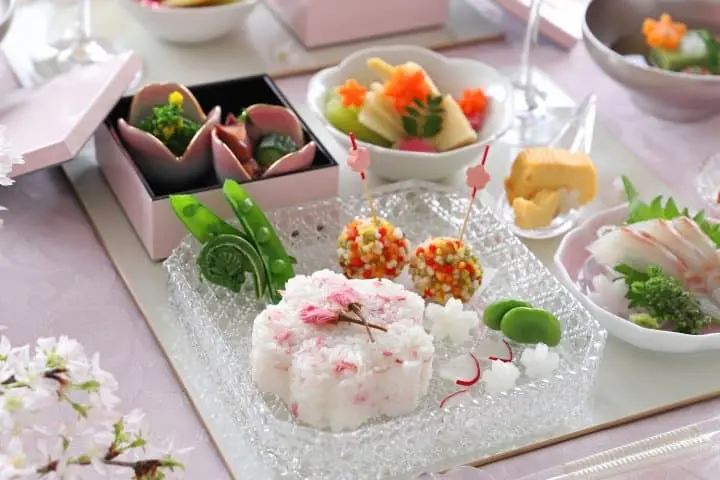
Photo by Pixta
Culture is the result of humans' interaction with the natural environment. Japan's nature prompted the locals to develop special cooking techniques to make the most out of the ingredients produced here. In Japanese cuisine, the seafood, the rice, the vegetables, and all the other ingredients are usually cooked so that they retain their original flavors and nutritional content.
Another cultural aspect that you get to experience firsthand is that it's customary in Japan to eat seasonal food. If seashells or crab are in season, cooks will find a way to insert them in the menu. If it's spring, you'll most likely have bamboo sprouts in your rice or miso soup. If it's fall, look for chestnuts or mushrooms in your food. The common sense that the seasons are changing and "now" is the time to enjoy a certain ingredient before it gets out of season is deeply ingrained in everyone's consciousness.
Last but not least, you'll notice that even the tableware and the aspect of the food reflect the seasons. In spring, rice and miso soup are decorated with cherry blossom-shaped ingredients. In summer, blue-colored plates will be used in order to induce the feeling of coolness. In the fall, all the plates and small vessels are shaped like or decorated with fall leaf motifs, and so on.
Even a simple breakfast menu is a chance to experience the Japanese worldview and aesthetics. In order to notice them, please take the time to observe each dish and the menu as a whole, and try to enjoy the food with all five senses.
Places to Enjoy Japanese Breakfast
Staying at a ryokan is undoubtedly the best way to enjoy an excellent traditional Japanese breakfast. At ryokans, the meals are part of a wholesome process of healing and well-being, which includes relaxation and bathing in the hot springs.
If you only wish to enjoy a Japanese breakfast, here are a few restaurants in Tokyo that serve it.
Enjoy the Japanese Breakfast
Tasting the Japanese breakfast might be a life-changing experience. You might enjoy it so much that you'll want to learn to cook it for yourself.
If that's the case, join a cooking workshop in Japan, then drop by a kitchenware store and pick up some of the innovative utensils they use here. Remember to keep the original flavor of the ingredients as much as possible (this means no overcooking) and try to incorporate a sense of the seasons in your meals. Enjoy washoku-style cooking!
Read also
Main image by Pixta
Ramona, English content editor at MATCHA since 2016, has been practicing ikebana flower arrangement (Ikenobo School) and tea ceremony (Omote Senke) since 2012. She arrived in Japan in 2012 as a graduate student with a focus on Japanese literature and performing arts. As a travel editor and writer, Ramona has visited and documented 40 of Japan's prefectures with a focus on art, history, traditional Japanese crafts, and performing arts.










































![[Coupon Available] Attention Overseas Winter Sports Fans! Nagano's Sports Depot Has Evolved](https://resources.matcha-jp.com/resize/720x2000/2026/01/05-254819.webp)
![[2 hours from Tokyo ] 10 Quiet and Breathtaking Views of Mount Fuji in Yamanashi Hokuto City , Yamanashi - Part 2](https://resources.matcha-jp.com/resize/720x2000/2025/12/16-253037.webp)

![[Reopening in March 2026] Ikoma Sanjo Amusement Park Park, 45 minutes from Osaka , with free admission](https://resources.matcha-jp.com/resize/720x2000/2024/08/28-194409.webp)
![[Gunma] 5 recommended gourmet foods at Kawaba Denen Plaza Roadside Station!](https://resources.matcha-jp.com/resize/720x2000/2025/02/26-225970.webp)